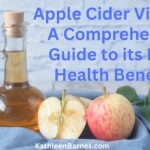by Robert Thompson, M.D. and Kathleen Barnes Authors of The Calcium Lie 2: What Your Doctor Still Doesn’t Know
Doesn’t Know
Do you regularly take Vitamin C? Just for starters, please take a look at the label on your bottle. I’m willing to bet it says you are getting Vitamin C as ascorbic acid. Am I right?
If so, you are taking a drug, not a vitamin and it may be causing you harm.
I’m just using Vitamin C as an example here. Sadly, the supplement industry had foisted drugs on the population in the guise of vitamins.
Let’s go on with the example of Vitamin C so I can help you understand the problem. Vitamin C is perhaps the most important vitamin nutrient available to humans, but only in its whole food form. It is one vitamin deficiency that, in severe form, will eventually kill you.
Ascorbic acid is not Vitamin C. Yes, ascorbic acid is one element of the Vitamin C molecule. In fact, ascorbic acid serves as the C molecule’s antioxidant envelope, where it protects other nutrients in the molecule from deteriorating. Ascorbic acid is only as much a representative of Vitamin C as the wrapper is part of your candy bar. It’s just holding and protecting the “good stuff” inside.
Ascorbic acid is much more like an antibiotic than a vitamin. It works by inducing the production of hydrogen peroxide (H2O2) or by increasing ROS (Reactive Oxygen Substances) inside the body’s cells. This gives ascorbic acid very specific anti-viral, anti- bacterial, and possibly anti-cancer properties, like drugs. There is no longer any confusion except in the name: Ascorbic acid is a drug. There might be times when its short-term use is appropriate, but ascorbic acid is not vitamin C.
Here are some of the other components of the Vitamin C molecule and what they do:
- Rutin (also called the “P” factor) strengthens blood vessels and other collagen-containing tissues, like cartilage;
- The “K” factor supports proper blood clotting, much like vitamin K, it also limits bruising and contributes to bone strength;
- The “J” factor supports the oxygen-carrying capacity of the blood to the benefit of all organs and tissues;
- Tyrosinase activates organic or ionic copper, allowing copper to function in stimulating metabolism, energy production, hemoglobin formation, thyroid hormone production and cholesterol metabolism;
- The five copper ions per molecule along with the enzyme tyrosinase are needed to help iron to be incorporated into the hemoglobin molecule for healthy red blood cells, correcting anemia and activating the cytochrome P-450 oxidase system with the help of tyrosinase to metabolize cholesterol;
- The numerous bioflavonoids have numerous enzyme and metabolic cofactor actions, many of which are still unknown:
- Ascorbagens have beneficial effects on some liver and intestinal enzymes;
- Ascorbic Acid is the binding site and part of the capsule of the molecule and has some antibiotic activity;
The whole Vitamin C molecule is the key to nearly all metabolic processes in the human body:
- It is involved in the formation of collagen, which forms connective tissues, gives them strength and is responsible for many cellular functions, including skin health and wound healing.
- Immune system function is dependent on vitamin C-complex;
- Hormone actions and synthesis are dependent on C-complex;
- It assists in amino acid metabolism and absorption;
- Regenerates the active form of vitamin E complex
Almost all of us need more of the whole C molecule and ascorbic acid alone actually depletes vitamin C from the body and can even be quite dangerous when given to people who are severely vitamin C deficient.
Look for a good while-food Vitamin C made from organic fruits and vegetables. You can boost your personal Vitamin C stores by eating a whole orange very day.
So now you’re getting the general idea of the Vitamin Lie. It applies to Vitamins A, B and E particularly. Look for whole food versions of these nutrients when you chose supplements and seek out and eat foods that contain them. We’ll be sharing more about how these nutrients can change your life in coming posts. You’ll get the entire picture in our book, The Calcium Lie II: What Your Doctor Still Doesn’t Know.








Many thanks for all these very interesting informations. I always enjoy your writings !
Where’s the heart button, thank you!
Thanks, dear old friend. I can’t find the heart button, either. <3